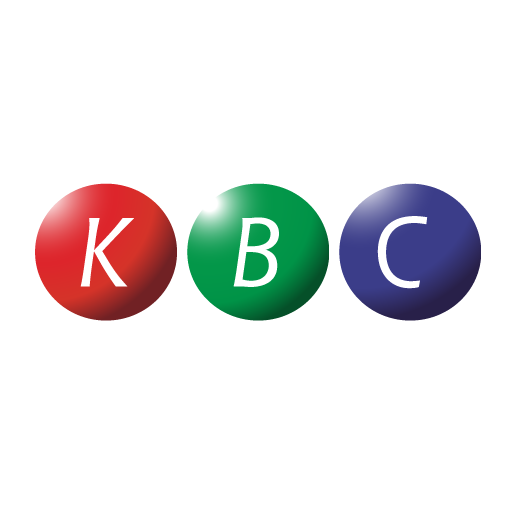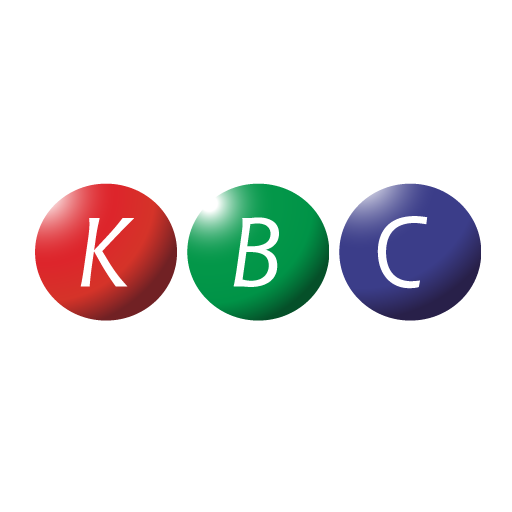The East African Coronation Rally, which later became the Safari Rally, was founded in 1953 as a driving celebration to honor Queen Elizabeth II of England’s coronation. Queen Elizabeth II was on vacation in Kenya in 1952 when she learned of the passing of her father, King George VI.
Early in 1952, Eric Cecil, his cousin Neil Vincent, and their friend Eric Tromp were having a drink together and talking about motorsport when the idea for the Safari Rally came to them.
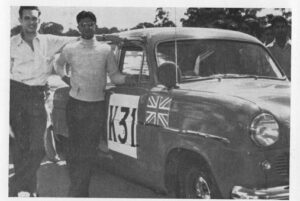
The Rolund Mountain Trial and a racing track at Langa Langa in Nakuru were two unusual hill climbs that were part of the race’s early iterations.
The first safari traveled 5,160 kilometers in difficult conditions since Kenya was experiencing the state of emergency.
The East African Standard newspaper and Shell Oil contributed 500 pounds each to the inaugural coronation rally’s sponsorship total of 1000 pounds, which at the time was a significant sum of money.
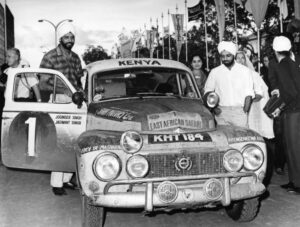
The legendary driver Joginder Singh made history when he and his brother Jaswant Singh won the 1965 Safari Rally in a Volvo PV44 and again in 1974, this time in Colt Lancer versions.
In the 1960s, Tanzanian Bert Shankland, who was driving a Peugeot, won the East African Safari Rally.
In 1972, Hannu Mikola and Gunnar Palm, driving a Ford Escort RS1600, became the first foreign competitors to ever win the Safari Rally.
Many drivers entered the early championship, but owing to its challenging conditions, only a select handful was able to finish.
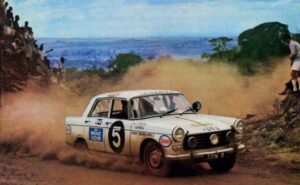
Bert-shankland competing in the East African Safari Rally in 1960″s
In the WRC era, Shekhar Mehta and Mike Doughty won four of their five Safari Rally championships.
Before 1972, when Hannu Mikola and Gunnar Palm in a Ford Escort RS1600 from Europe won, European and later Asian drivers had been competing for all 19 years without success.
When Shekha Mehta, a young phenomenon, stopped Mikola in a Datsun/Nissan, their third triumph following Edgar Hermann and Hans Schuller in 1970/71 in a Datsun 1600SSS, the FIA, then FISA, included the Safari in the World Rally Championship (WRC).
After that, European manufacturers predominated the safari rally, starting with the VW Beetle in the 1950s, followed by Ford, Mercedes, and Peugeot in the 1960s.
Driving a Toyota Celica GT4 Turbo, Ian Duncan and Ian Muroe became the final Kenyans to triumph at the 1994 WRC Safari Rally.
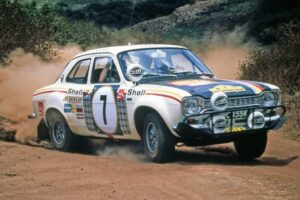
After Tanzania withdrew because its political ties to Kenya were deteriorating, the Safari was renamed the Kenya Safari Rally in 1974. In a Colt Lancer, Joginder won both that year and in 1976.
Vic Preston Junior, whose father Vic Preston Senior won the rally in, was the first local driver that Europeans used to enhance their vehicles and provide them with one-off, total assistance as they prepared to conquer Africa completely.
He accomplished the same exploits again in 1978 and 1981. Before anything happened, he would always outrun the best.
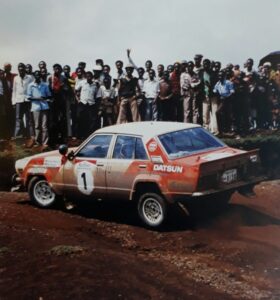
Factory and European drivers continued to have a mixed record, with victories in 1975, 1977, and 1978 before Mehta produced four straight wins (1979–82).
Kenyan drivers were then forced to finish in second place for the following 12 years until Duncan’s victory in a works Toyota Celica in 1994, which was significant as it was the last victory by Kenyan drivers.
From 2002 to 2020, the Safari Rally was not included on the WRC schedule. This changed after the Kenya Motorsport Federation and the Kenyan government implemented the required security upgrades and complied with FIA regulations.
The 1999 WRC was won by Phineas Kimathi and Abdul Sidi.
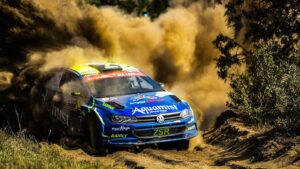
By publishing Gazette Notice Number 181 on November 1, 2017, the Kenyan government sanctioned the WRC Safari Rally Project to bring the safari back to the WRC by 2020.
Kenya formally requested the opportunity to compete in the World Rally Championship again since 2002 in 2018, and the WRC Promoter accepted that request.
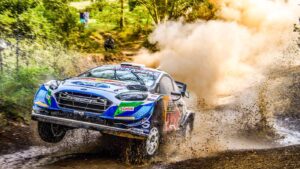
On June 21, in Paris, France, and in the presence of FIA President Jean Todt, the Promoter’s Agreement was signed by Peter Kaberia, Principal Secretary in the Ministry of Sports, Culture and Heritage, and Oliver Ciesla, Managing Director of WRC Promoter.
Since its resumption Kenya has hosted succeful editions of the WRC Safari Rally under the new format in Naivasha with Sébastien Ogier Julien Ingrassia of Toyota Gazoo winnng the WRC main category and Kenyan Onkar Rai and Drew Sturrock winning the WRC 3 in 2021.
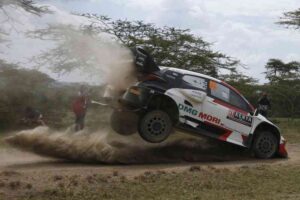
Kalle Ronavanperra of Toyota Gazoo racing team emerged champion in 2022,while Rai Amanraaj navigated by Panesar Gurdeep in icon Škoda Fabia being the best palced kenya in Rally2 .



